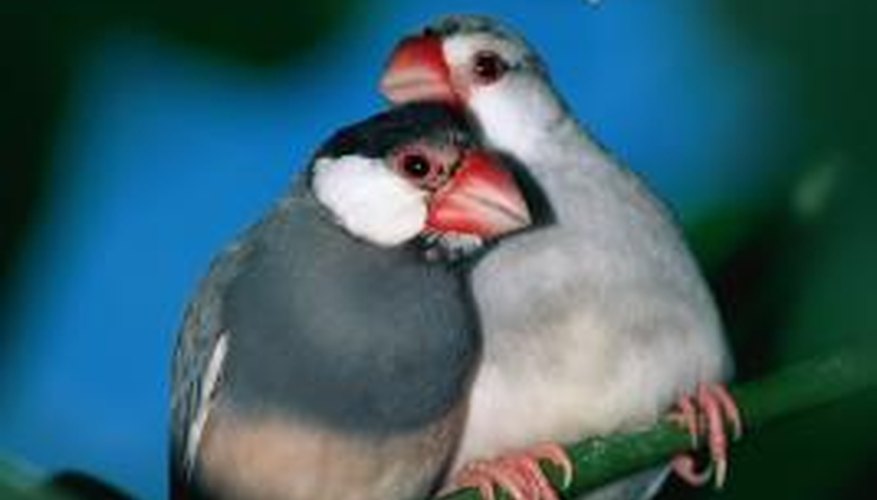The Java Finch, also known as the Java Sparrow or the Java Rice Bird, is a large specimen--about 5 and 1/2 inches in length--which is a native of the islands of Java in Indonesia. This finch is a popular cage-bird because it's pretty, easy to maintain, and a prolific breeder; its most distinguishing feature is a remarkably robust beak, which (contrary to popular opinion) isn't used to bully other aviary birds. This finch actually is docile and very sociable.
- The Java Finch, also known as the Java Sparrow or the Java Rice Bird, is a large specimen--about 5 and 1/2 inches in length--which is a native of the islands of Java in Indonesia.
- This finch is a popular cage-bird because it's pretty, easy to maintain, and a prolific breeder; its most distinguishing feature is a remarkably robust beak, which (contrary to popular opinion) isn't used to bully other aviary birds.
Ensure your Java Finch has the company of its own species. These birds are highly sociable and tend to flourish when there is at least a pair, preferably more. Their daily routine involves constant communication with other Java Finches, and although this squabbling and "beak fencing" may sound discordant to our ear, these behaviours are essential to their interaction and well being.
Feed this bird a basic parakeet seed mix, standard finch mix, or white Proso millet (a birdseed that offers good nutrition). Egg food, inexpensive and easy to prepare, is another important dietary supplement, particularly as captive birds often lack protein in their diet. Crushed egg shell should be added as a calcium supplement.
Clip your Java Finch's claws, using a regular nail-clipper, whenever the claws become too long. Initially, this task may be difficult, but is essential--if the finch's nails become too long they can catch on items in the aviary, which can lead to injury. Hold the bird's head between your index and middle fingers to restrain it while you trim. If you don't feel confident, take the bird to a veterinarian or breeder.
Attach a bird bath to an opening in the cage or aviary; but monitor the water for pollution as the Java Finch will drink the water it uses to clean itself. To keep the water as clean as possible, add Saniclens or change frequently. Alternatively, place a large saucer of water at the bottom of the cage or aviary and remove as necessary.
- Clip your Java Finch's claws, using a regular nail-clipper, whenever the claws become too long.
- Attach a bird bath to an opening in the cage or aviary; but monitor the water for pollution as the Java Finch will drink the water it uses to clean itself.
Provide your Java Finches with enough space to fly, the length of your bird cage or aviary being more important than the height, as finches fly across as opposed to upwards. The ideal space for a pair of breeding Java Finches, for instance, is 3 square feet of floorspace.
TIP
Although the Java Finch can tolerate a wide range of temperatures, avoid exposing it to a cold environment of below 25ºF for prolonged periods.
